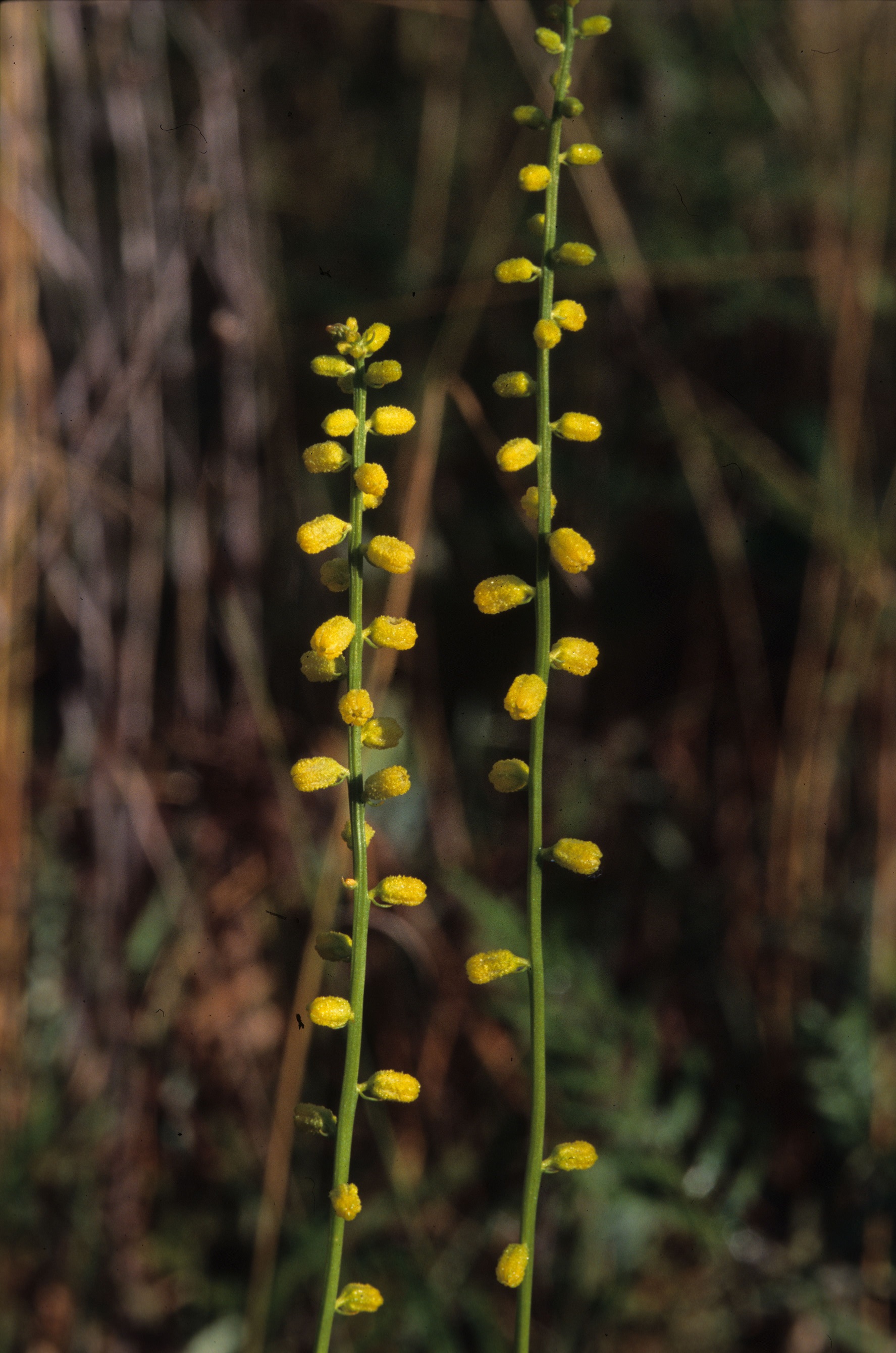Difference between revisions of "Aletris aurea"
Krobertson (talk | contribs) (→Conservation and Management) |
|||
| Line 45: | Line 45: | ||
<!--===Use by animals===--><!--Herbivory, granivory, insect hosting, etc.--> | <!--===Use by animals===--><!--Herbivory, granivory, insect hosting, etc.--> | ||
<!--===Diseases and parasites===--> | <!--===Diseases and parasites===--> | ||
| − | + | ==Conservation and Management== | |
| − | |||
==Cultivation and restoration== | ==Cultivation and restoration== | ||
Revision as of 13:26, 14 June 2016
| Aletris aurea | |
|---|---|

| |
| Photo taken by Gil Nelson | |
| Scientific classification | |
| Kingdom: | Plantae |
| Division: | Tracheophyta - Vascular plants |
| Class: | Magnoliopsida– Monocotyledons |
| Order: | Dioscoreales |
| Family: | Nartheciaceae |
| Genus: | Aletris |
| Species: | A. aurea |
| Binomial name | |
| Aletris aurea Walter | |

| |
| Natural range of Aletris aurea from USDA NRCS Plants Database. | |
Common names: Late Flowering Colicroot; Golden Colicroot
Contents
Taxonomic notes
The genus name Aletris comes for the Greek word for a female slave who ground corn, this is in reference to the perianth shaped like a corn kernel. The specific epithet is derived from the Latin meaning for gold[1].
Description
A description of Aletris aurea is provided in The Flora of North America.
It is a perennial. Flowers from spring to fall[2].
Distribution
It is infrequent in north and west Florida; is found west to Texas and north to Maryland[2].
Ecology
Habitat
This species requires high levels of sun and can be found in both poorly and well drained areas including savannas, flatwoods, bogs, and pine plantations[3][4]. Associated species include Aletris lutea, Aristida, and Pinus palustris[3]. Average maximum root depth is 14.5 cm.[5]
Phenology
Blooms April through July[6].
Seed dispersal
According to Kay Kirkman, a plant ecologist, this species disperses by gravity. [7]
Fire ecology
This plant does well in areas that are annually burned[3].
Conservation and Management
Cultivation and restoration
The roots were used to for medicinal properties. It has been claimed to be an excellent remedy in colic, chronic rheumatism, and dropsical affections. In large doses it may cause nausea and vomiting.[8]
References and notes
- ↑ [[1]]Alabama Plants. Accessed: March 22, 2016
- ↑ 2.0 2.1 Hall, David W. Illustrated Plants of Florida and the Coastal Plain: based on the collections of Leland and Lucy Baltzell. 1993. A Maupin House Book. Gainesville. 241. Print.
- ↑ 3.0 3.1 3.2 Florida State University Robert K. Godfrey Herbarium Database. URL:http://herbarium.bio.fsu.edu. Last accessed: June 2014. Collectors: Loran C. Anderson, Robert K. Godfrey, R. Komarek, and R.A. Norris. States and Counties: Florida: Liberty. Georgia: Thomas.
- ↑ Wunderlin, Richard P. and Bruce F. Hansen. Guide to the Vascular Plants of Florida. Second edition. 2003. University Press of Florida: Gainesville/Tallahassee/Tampa/Boca Raton/Pensacola/Orlando/Miami/Jacksonville/Ft. Myers. 147. Print.
- ↑ Brewer, J. S., D. J. Baker, et al. (2011). "Carnivory in plants as a beneficial trait in wetlands." Aquatic Botany 94: 62-70.
- ↑ [[2]]Lady Bird Johnson Wildflower Center. Accessed: March 22, 2016
- ↑ Kay Kirkman, unpublished data, 2015.
- ↑ Porcher, F. P. (1863). Resources of the southern fields and forests, medical, economical, and agricultural : being also a medical botany of the Confederate States; with practical information on the useful properties of the trees, plants and shrubs. Richmond, VA, Order of the Surgeon-General.